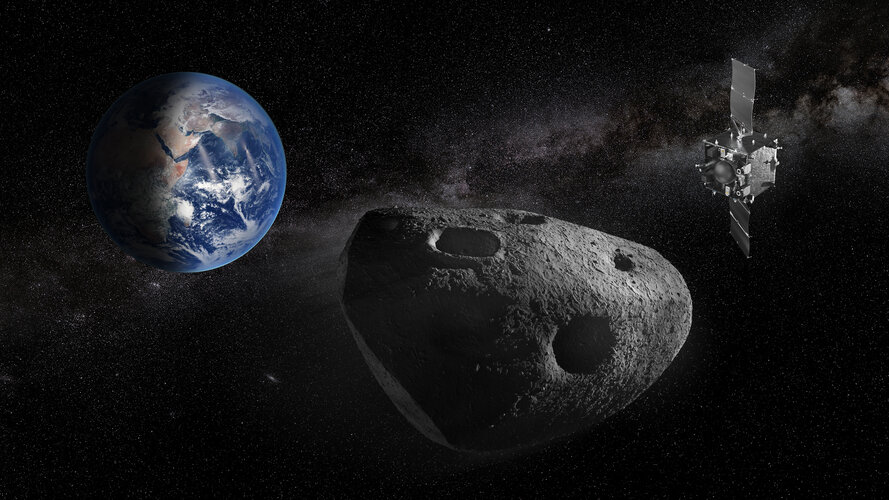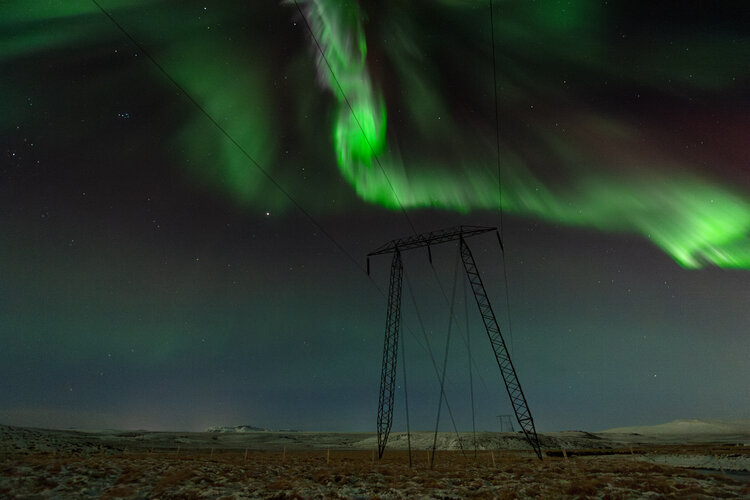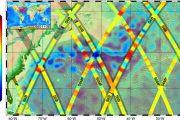
Copernical Team
Adaptation to extreme conditions thermal water biofilm studies could help understand ancient ecosystems
 Hungarian scientists have uncovered distinctive bacterial communities in thermal waters, offering key insights into the processes behind stromatolite development, some of Earth's most ancient rock formations. Their findings not only provide a deeper understanding of the planet's geological past but also shed light on modern extreme environments where similar processes still occur.
A resear
Hungarian scientists have uncovered distinctive bacterial communities in thermal waters, offering key insights into the processes behind stromatolite development, some of Earth's most ancient rock formations. Their findings not only provide a deeper understanding of the planet's geological past but also shed light on modern extreme environments where similar processes still occur.
A resear NASA's Hubble Telescope May Have Uncovered a Triple System in the Kuiper Belt
 A team of astronomers analyzing data from NASA's Hubble Space Telescope and the W. M. Keck Observatory in Hawaii has likely discovered a rare three-body system in the Kuiper Belt. If confirmed, this would mark only the second such system found in the distant region of icy bodies beyond Neptune, suggesting that similar formations may be more common than previously thought.
The 148780 Altjir
A team of astronomers analyzing data from NASA's Hubble Space Telescope and the W. M. Keck Observatory in Hawaii has likely discovered a rare three-body system in the Kuiper Belt. If confirmed, this would mark only the second such system found in the distant region of icy bodies beyond Neptune, suggesting that similar formations may be more common than previously thought.
The 148780 Altjir NASA Successfully Acquires GPS Signals on Moon
 NASA and the Italian Space Agency made history on March 3, when the Lunar GNSS Receiver Experiment (LuGRE) became the first technology demonstration to acquire and track Earth-based navigation signals on the Moon's surface
NASA and the Italian Space Agency made history on March 3, when the Lunar GNSS Receiver Experiment (LuGRE) became the first technology demonstration to acquire and track Earth-based navigation signals on the Moon's surface NASA Continuing Efforts to Restore Contact with Lunar Trailblazer
 NASA's mission operations team at Caltech's IPAC remains committed to restoring communication with the Lunar Trailblazer satellite, which recently lost signal.
Preliminary telemetry data prior to the loss of contact, combined with ground-based radar observations from March 2, suggest that Lunar Trailblazer is in a low-power state and spinning slowly. Mission controllers are actively monito
NASA's mission operations team at Caltech's IPAC remains committed to restoring communication with the Lunar Trailblazer satellite, which recently lost signal.
Preliminary telemetry data prior to the loss of contact, combined with ground-based radar observations from March 2, suggest that Lunar Trailblazer is in a low-power state and spinning slowly. Mission controllers are actively monito Redwire Selected to Develop Concept for Advanced Mars Spacecraft
 Redwire Corporation (NYSE:RDW), a leading provider of space infrastructure, has secured a study contract from the European Space Agency (ESA) to design an innovative spacecraft platform intended for future Mars missions under the ESA LightShip initiative.
Redwire's Belgian subsidiary, Redwire Space NV, is one of four organizations selected for independent industry studies focused on defini
Redwire Corporation (NYSE:RDW), a leading provider of space infrastructure, has secured a study contract from the European Space Agency (ESA) to design an innovative spacecraft platform intended for future Mars missions under the ESA LightShip initiative.
Redwire's Belgian subsidiary, Redwire Space NV, is one of four organizations selected for independent industry studies focused on defini Europe's Ariane 6 rocket launch rescheduled to March 6
 The first commercial mission of Europe's new heavy-lift rocket Ariane 6 has been rescheduled for Thursday, French company Arianespace announced, after an "anomaly" forced a last-minute postponement.
The already twice-delayed rocket was slated to lift off Monday, but had to be delayed after the discovery of a dysfunctional valve.
The high-profile mission aims to carry a French military sa
The first commercial mission of Europe's new heavy-lift rocket Ariane 6 has been rescheduled for Thursday, French company Arianespace announced, after an "anomaly" forced a last-minute postponement.
The already twice-delayed rocket was slated to lift off Monday, but had to be delayed after the discovery of a dysfunctional valve.
The high-profile mission aims to carry a French military sa Musk survives Royal Society expulsion; EU tasked to detail public funding to SpaceX, Tesla
 Tech billionaire Elon Musk has survived calls for his expulsion from the Royal Society following a crunch meeting at the elite British science institute.
However, the roughly 150 members in attendance vowed to combat "misinformation and ideologically motivated attacks" on science following Monday's closed-door talks.
It came after more than 3,000 people including Nobel prize winners sign
Tech billionaire Elon Musk has survived calls for his expulsion from the Royal Society following a crunch meeting at the elite British science institute.
However, the roughly 150 members in attendance vowed to combat "misinformation and ideologically motivated attacks" on science following Monday's closed-door talks.
It came after more than 3,000 people including Nobel prize winners sign SpaceX aims for Wednesday Starship test flight after last-minute scrub
 Elon Musk's SpaceX is now aiming for Wednesday to conduct the next test flight of its massive Starship rocket, following a last-minute cancellation on Monday.
The world's biggest and most powerful launch vehicle is set to lift off from SpaceX's Starbase facility in Boca Chica, Texas, during a launch window that opens at 5:30 pm local time (2330 GMT).
It will be Starship's eighth orbital
Elon Musk's SpaceX is now aiming for Wednesday to conduct the next test flight of its massive Starship rocket, following a last-minute cancellation on Monday.
The world's biggest and most powerful launch vehicle is set to lift off from SpaceX's Starbase facility in Boca Chica, Texas, during a launch window that opens at 5:30 pm local time (2330 GMT).
It will be Starship's eighth orbital First CubeSat joins ESA's Ramses mission to asteroid Apophis

Striking images tell the story of space weather

A compelling collection of images that illustrates humanity’s efforts to mitigate the far-reaching impacts of violent solar outbursts has been unveiled in London.





























